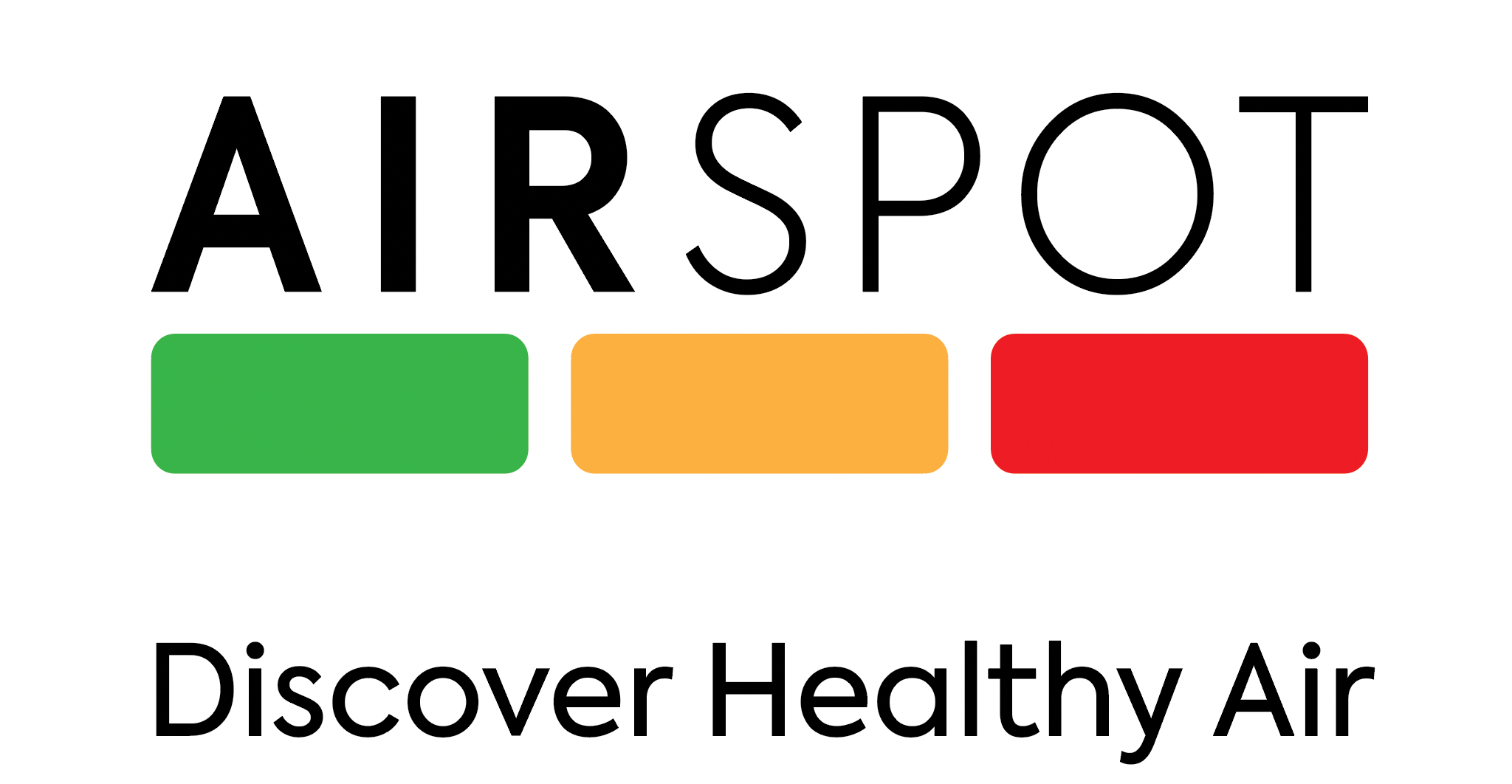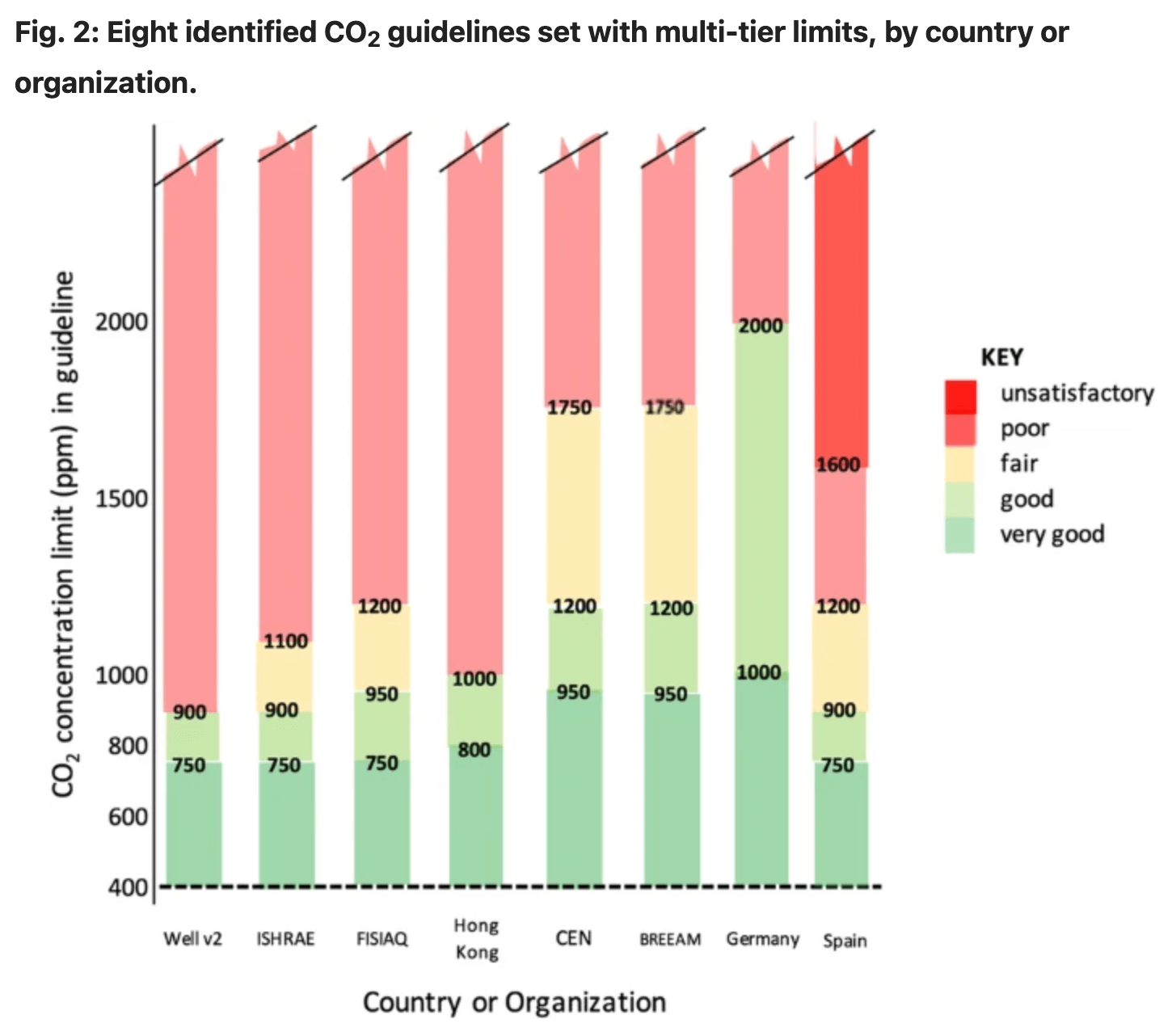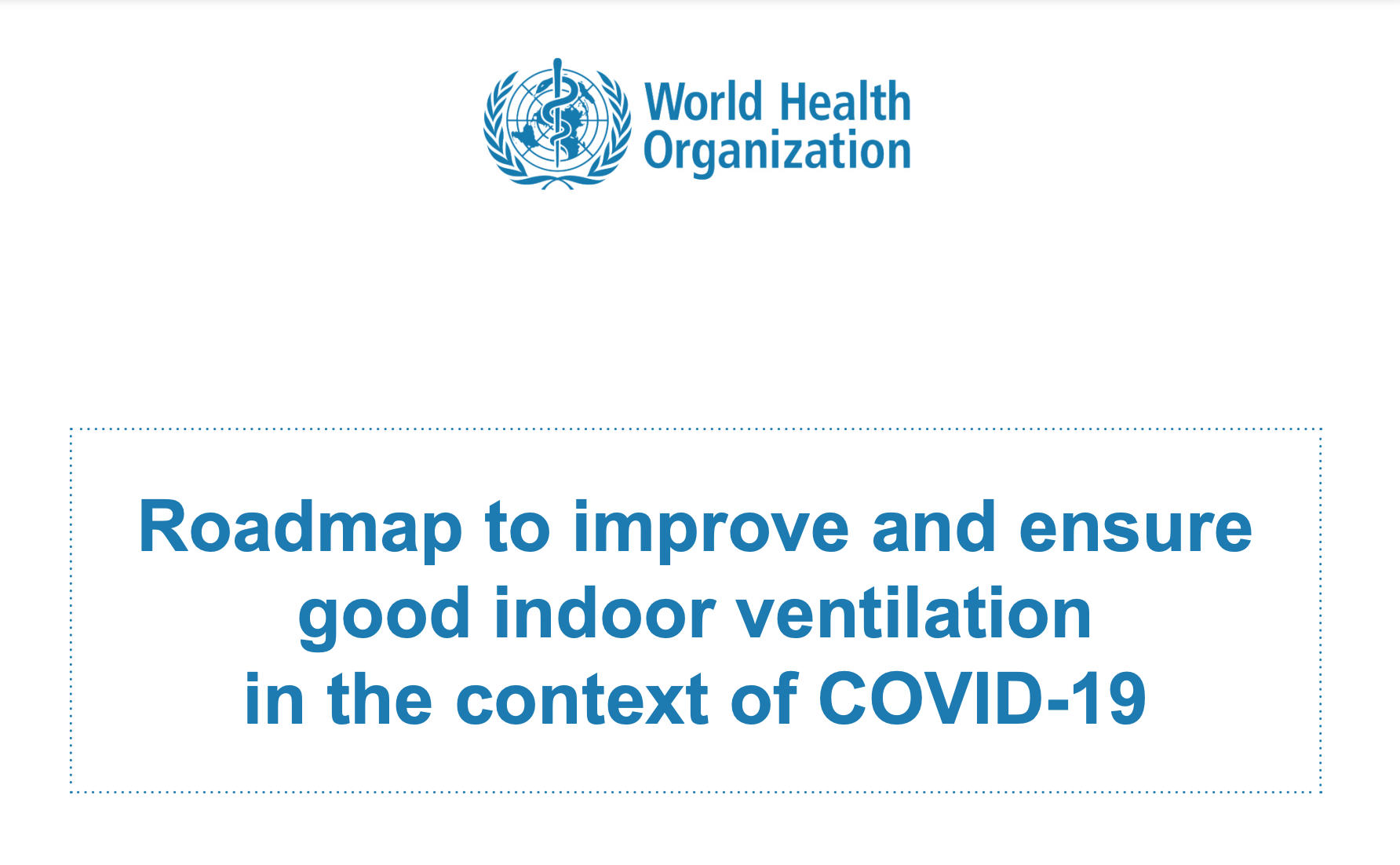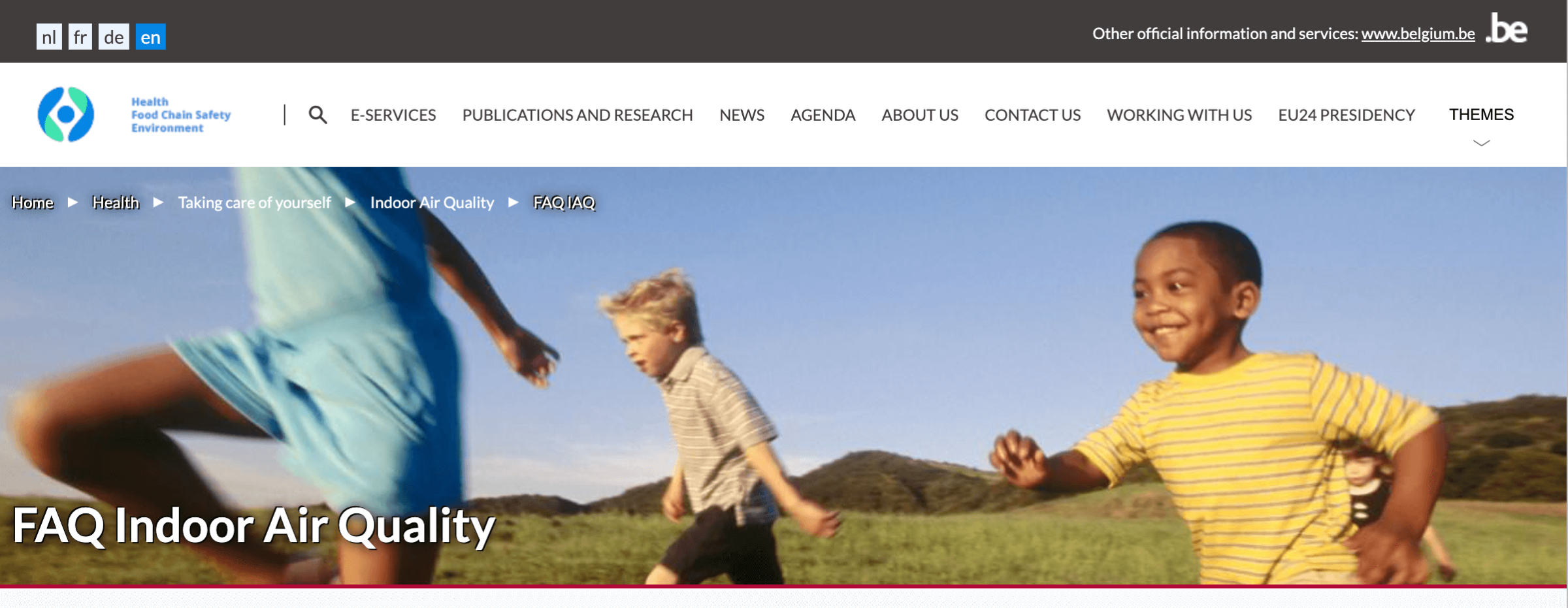Check out this review of International Indoor CO2 Level Guidelines published in June 2024
From: Carbon dioxide guidelines for indoor air quality: a review
Background
The importance of building ventilation to protect health has been more widely recognized since the COVID-19 pandemic. Outdoor air ventilation in buildings dilutes indoor-generated air pollutants (including bioaerosols) and reduces resulting occupant exposures. Many countries and organizations have advisory guidelines or mandatory standards for minimum ventilation rates (VRs) to maintain indoor air quality (IAQ). Because directly measuring VRs is often difficult, many IAQ guidelines instead specify indoor concentration limits for carbon dioxide (CO2), using CO2 exhaled by building occupants as an indicator of VR. Although indoor CO2 guidelines are common, the evidence basis for the various CO2 limits has not been clear.
Objective
To review current indoor CO2 guidelines worldwide and the supportive evidence provided.
Results
Among 43 guidelines identified, 35 set single CO2 concentration limits and eight set multi-tiered limits; 16 mentioned no specific human effect to be controlled, 19 specified only odor dissatisfaction, five specified non-infectious health effects, and three specified airborne infectious disease transmission. The most common indoor CO2 limit was 1000 ppm. Thirteen guidelines specified maximum CO2 limits as extended time-weighted averages, none with evidence linking averaged limits to occupant effects. Of only 18 guidelines citing evidence to support limits set, we found this evidence persuasive for eight. Among these eight guidelines, seven set limits to control odor perception. One provided 17 scientifically-based CO2 limits, for specific example space uses and occupancies, to control long-range COVID-19 transmission indoors.
Impact
Many current indoor carbon dioxide (CO2) guidelines for indoor air quality specified no adverse effects intended for control. Odor dissatisfaction was the effect mentioned most frequently, few mentioned health, and three mentioned control of infectious disease. Only one CO2 guideline was developed from scientific models to control airborne transmission of COVID‐19. Most guidelines provided no supportive evidence for specified limits; few provided persuasive evidence. No scientific basis is apparent for setting one CO2 limit for IAQ across all buildings, setting a CO2 limit for IAQ as an extended time-weighted average, or using any arbitrary one-time CO2 measurement to verify a desired VR.
To read more about this review of international guidelines click on this link: https://www.nature.com/articles/s41370-024-00694-7





